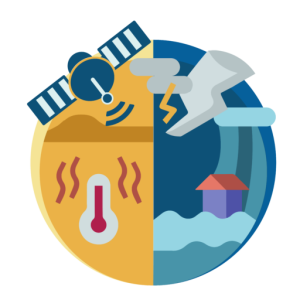Frequently Asked Questions
Compound or cascading hazards refer to the combination of multiple natural hazards or drivers that contribute to societal or environmental risk. These interactions are challenging to predict and can result in more significant and destructive consequences than individual hazards alone. For example, the simultaneous occurrence of droughts and heatwaves can amplify their impact.
Climate change plays a major role in exacerbating compound/cascading hazards. It can alter the frequency, duration, and intensity of these events. The rising temperatures, increased evaporation, and changes in precipitation patterns contribute to the complexity and unpredictability of these hazards.
At the end of the century, the population’s exposure to compound hot extremes is projected to be four to eight times higher than in the 2010s, depending on demographic and climate scenarios. This increase poses a significant risk, particularly in the Northern Hemisphere.
Compound events involve the combination of multiple natural hazards, such as droughts, heatwaves, or heavy rainfall, leading to complex interactions and amplified impacts. In contrast, cascading events refer to a sequence of events triggered by an initial event, often with significant impacts, where subsequent events are directly or indirectly related to the trigger event. Cascading events create a cause-and-effect chain reaction, while compound events involve concurrent or sequential hazard occurrences that can amplify their overall impact. Both types of events pose challenges for disaster management due to their complexity and potential for significant consequences.
Compound hazards involve the combination of multiple natural phenomena or hazards occurring simultaneously or sequentially. The key characteristic of compound hazards is their co-occurrence or sequence, leading to complex interactions and often resulting in impacts that are greater than the sum of individual hazard impacts. For example, a compound hazard might entail a heatwave followed by heavy rainfall, which can lead to flooding and other interconnected consequences. Understanding and managing compound hazards are essential in disaster preparedness and response due to their potential for amplified and multifaceted impacts.
Compound events can be described through four main elements: Impacts (loss in terms of human health, economy, and the environment), Hazards (climate-related phenomena causing impacts), Drivers (weather systems causing hazards), and Modulators (factors influencing the frequency and magnitude of drivers and hazards).
Cascading events involve a sequence of events triggered by an initial event, leading to significant impacts. They are a major concern due to their unpredictability and potential for complex consequences,
including casualties, psychological trauma, the spread of infectious diseases, damage to ecosystems, and disruption of critical infrastructure. They pose complex challenges and uncertainties for society.
Climate change can lead to higher temperatures, sea-level rise, increased heavy rainfall, and other impacts that contribute to the complexity of cascading events. While the precise effects are not fully understood, evidence suggests that climate change will increase the frequency and severity of these events.
Understanding multi-hazard interactions is crucial for policymakers and decision-makers to develop effective strategies for disaster preparedness and response. It allows for more comprehensive risk assessment and mitigation measures to protect vulnerable populations and critical infrastructure. Researchers advocate for coordinated research efforts to improve our understanding of these interactions.
